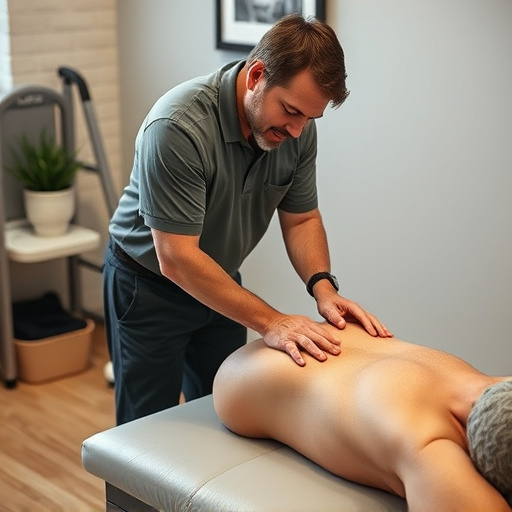Immediate action is crucial for effective occupational injury treatment. Assess severity, recognize symptoms, and seek specialized medical help promptly to avoid exacerbating injuries. First aid measures like immobilization and cold compresses are vital for minor to severe injuries. Comprehensive diagnosis using imaging leads to a personalized treatment plan including medication, exercises, therapy, and surgery if needed. Regular communication with healthcare providers ensures adjustments to the plan based on recovery progress.
“Suffering from an occupational injury? Immediate action is crucial for effective recovery. This guide outlines essential steps to begin your treatment journey seamlessly. Start by carefully assessing the injury and seeking professional medical help without delay. Next, implement basic first aid measures to stabilize the condition. Finally, collaborate with healthcare providers to develop a tailored occupational injury treatment plan addressing specific needs and facilitating a full recovery.”
- Assess the Injury and Seek Professional Help
- Implement Immediate First Aid Measures
- Develop a Comprehensive Treatment Plan
Assess the Injury and Seek Professional Help

When an occupational injury occurs, it’s crucial to take immediate action. The first step is to carefully assess the injury and understand its severity. This involves recognizing any pain, limitations in movement, or other symptoms that might indicate a serious condition. For instance, if you’ve suffered a fall at work and experience severe head or neck pain, seek medical attention immediately.
Time is of essence when it comes to occupational injury treatment. Delays can lead to prolonged recovery times or even permanent disabilities. Once the injury is assessed, reach out to healthcare professionals who specialize in occupational medicine or physical therapy. They can provide a proper diagnosis and design personalized treatment plans tailored to your specific needs, whether you’ve experienced musculoskeletal injuries from repetitive tasks or were involved in a car accident on the job.
Implement Immediate First Aid Measures

When an occupational injury occurs, implementing immediate first aid measures is crucial for effective occupational injury treatment. The primary goal during this initial phase is to prevent further harm and promote quick recovery. For injuries like sprains, strains, or minor cuts, stop any ongoing work activity and assess the extent of the damage. Apply direct pressure to control bleeding and use cold compresses to reduce swelling. In cases of suspected fractures or severe head injuries, immobilize the affected area using available means while awaiting professional medical assistance.
Providing prompt post-injury care can significantly impact the long-term outcomes for employees suffering from occupational injuries. This includes ensuring proper neck pain relief and addressing any accompanying symptoms like headaches. Remember, early intervention is key to managing pain, reducing inflammation, and expediting the healing process. Therefore, employers should train staff in basic first aid to handle such situations effectively until professional medical help arrives.
Develop a Comprehensive Treatment Plan

After immediately recognizing and addressing an occupational injury, developing a comprehensive treatment plan is crucial for effective recovery. This involves assessing the extent of the injury through professional medical evaluation, which can include diagnostic imaging and nerve conduction studies to identify issues like herniated discs or pinched nerves, commonly associated with work-related injuries. Based on these findings, a tailored strategy should be designed to address specific pain points and promote healing.
The treatment plan may incorporate various components, such as medication for pain management, including anti-inflammatory drugs and topical agents, alongside therapeutic exercises targeted at strengthening muscles and improving flexibility. In severe cases, interventions like physical therapy or even surgery might be recommended. It’s essential to adhere to the prescribed protocol and regularly communicate with healthcare providers to adjust the plan as needed, ensuring a successful recovery process for the occupational injury.
Injury at work can be distressing, but immediate action is key. By assessing the situation and seeking professional help, you lay the foundation for effective treatment. Implementing first aid measures while developing a tailored treatment plan ensures a swift and successful recovery from your occupational injury. Remember, prompt action is crucial in managing pain, preventing complications, and returning to work faster.














